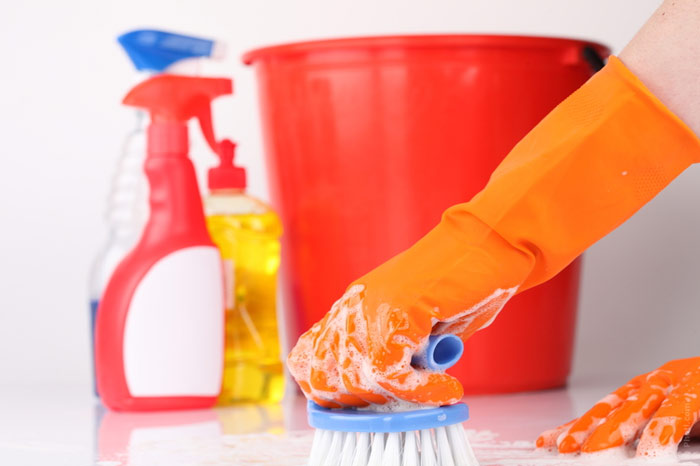6 Chemicals to Avoid during Pregnancy
Has the coveted test shown pregnancy? It’s time to reconsider the cosmetic bag and the cabinet in the bathroom.

We live in the world of chemicals: we use cosmetics and personal care products. And these means are increasingly represented by absolute products of chemical manufacturing. What is relatively harmless to non-pregnant and non-lactating women may become a significant threat to the unborn baby. So, what substances should be avoided during pregnancy?
Hexahydrate and aluminum chlorohydrate
If the package says that the dye contains no ammonium – it does not mean that the dye is harmless. If you read the composition, there are so many chemical substances there that the dye with ammonium seems environmentally friendly.
They are part of many antiperspirants. They produce neurotoxic effect on the nervous system of the fetus. The saddest thing is that even with no visible structural changes in the brain they can alter the behavior of the child after birth. The so-called “behavioral teratogenicity” occurs when a person is affected by small doses of the acting component. The substances slow down the pre- and post-natal brain development in the child.
Diethanolamine (DEA). Oleamide, lauramide, cocamide
They are part of shampoos and shower gels. They are used exclusively to give an attractive appearance by “thickening” the product and serve no other purpose. They absolutely do not help cleanse the body or hair. In humans, nitrosamines, which are quite potent carcinogens, may form a compound with various substances. They disrupt the brain development of the future child, blocking the flow of choline. Choline – vitamin B4 – is a vital substance needed for the proper functioning of the brain.
- They increase cell death in the brain areas, responsible for memory.
- They increase the likelihood of spontaneous abortion.
- Plain shampoo bottles contain approximately 10 ml of DEA, which we rub with “massage” movements into the scalp in hot water, increasing its absorption. After 30 bottles of the shampoo, you will have poured 10 ml of pure undiluted DEA in your body.
Dihydroxyacetone (DND)
It is included in the aerosol tanning products. Classy “bronze hue” has the ability to change the DNA of different cells in different biological organisms. After being inhaled, it is easily transported into the bloodstream. It is a carcinogen.
Hydroquinone
It is included in many “whitening” creams for oily skin. The cream has a high capacity for absorption into the bloodstream, so it easily passes through the placenta to the future baby. Due to lack of awareness about the long-term effects of hydroquinone, it is not recommended for use.
Phthalates
Phthalates are really not so terrible, and if you want to please yourself, you can use such products. Just try not to breathe too much over the product which will be used to deal with toenails.
These are synthetic “odorants”, due to which the pleasant smell of cosmetic products “sticks” to the body. They are used in scented pads and tampons, nail polishes, air fresheners, shampoos, gels for the body. They are informally known as “hormone disruptors” as they disrupt brain development of the fetus because of the negative effects on thyroid hormones. These substances affect the reproductive function of the unborn child and provide the basis for a possible infertility. They can increase the risk of asthma and are easily transmitted through breast milk.
Parabens
These preservatives have been used in the cosmetic industry since 1920 to prevent the growth of bacteria. They are effective, inexpensive and are rapidly cleared from the body. Parabens are part of the nail polish, mascara, and means for straightening hair. They are classified as carcinogens that have estrogen-like effects. Therefore, they have the negative impact on the future ability of male fetuses to have children. They increase the risk of developing breast cancer.
Studies of pregnant employees of nail salons have shown that the number of spontaneous abortion cases in these women was significantly higher than among the women from other areas.
If to think about the above mentioned issues, it becomes clear why the majority of “superstitions” for pregnant women have appeared: not to dye hair, not to use cosmetics, to wear cotton underwear. Are they superstitions, indeed?
